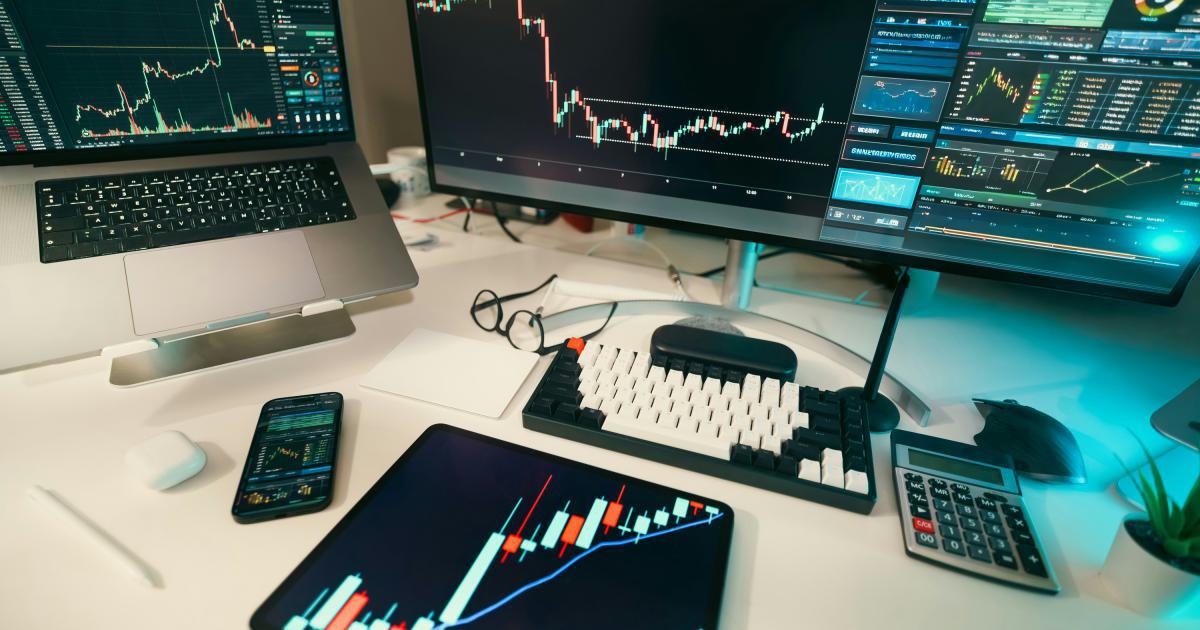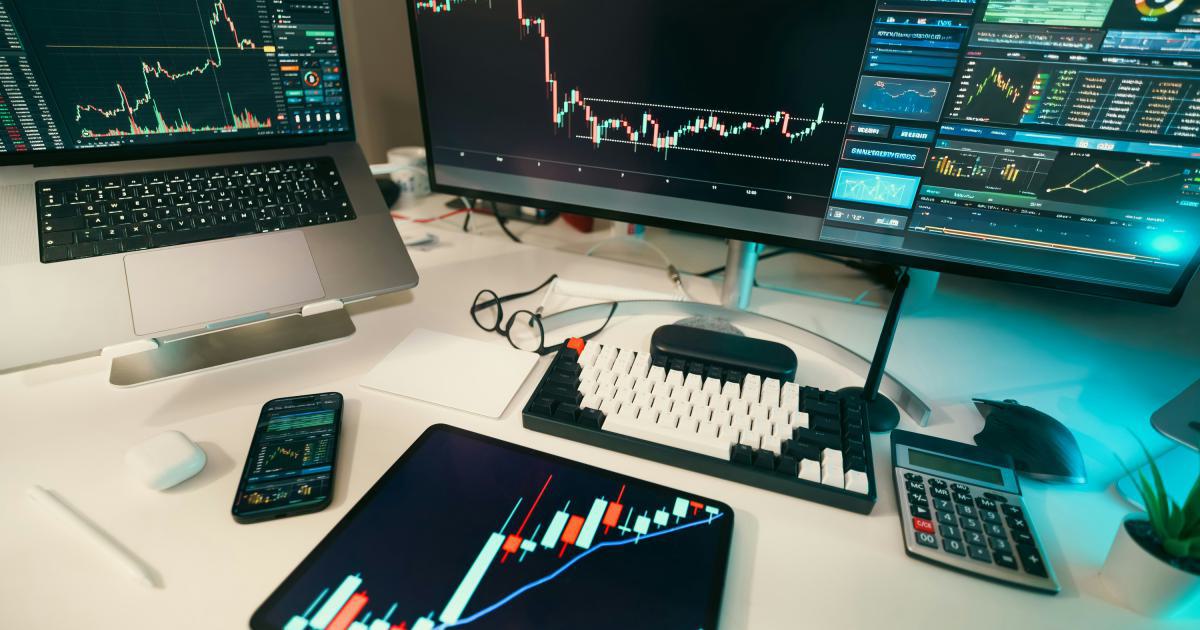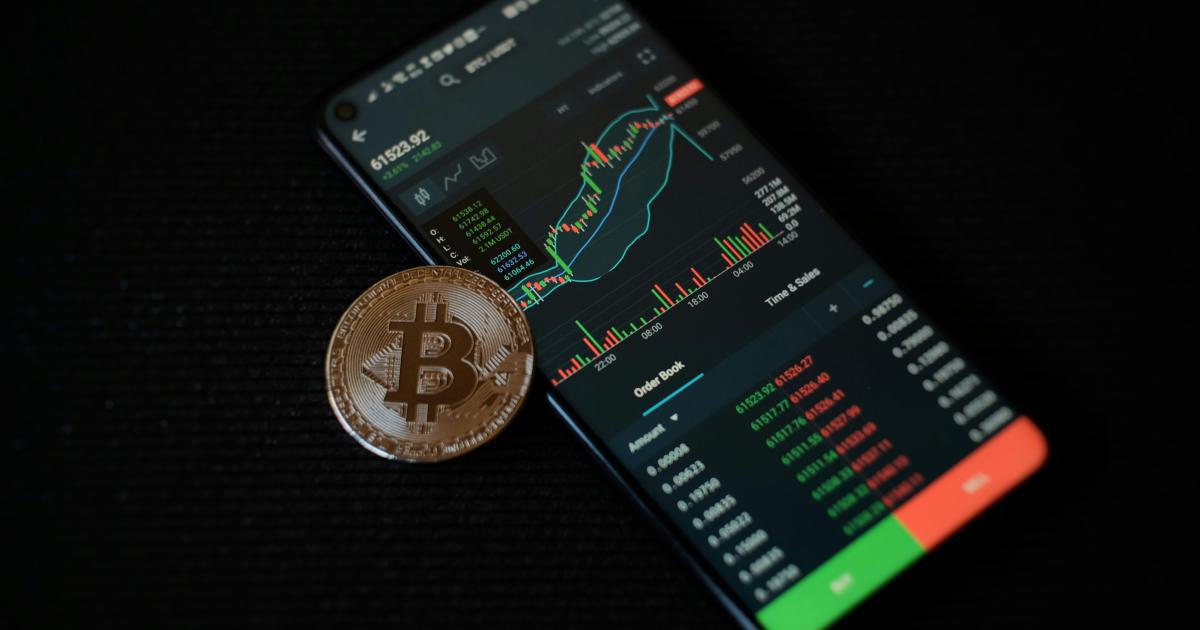How to Easily Set Up Robinhood Paper Trading

Opening Hook
Imagine stepping into a virtual simulation of the stock market where you can test your trading strategies without risking your hard-earned money. This is exactly what a robinhood paper trading account setup allows you to do—a risk-free environment where you can learn, experiment, and grow as an investor. Picture this: a rainy afternoon, a warm cup of coffee by your side, and a newfound curiosity urging you to test the waters of trading on Robinhood. The idea that you could practice trading like a professional before committing real funds is not only exhilarating but also incredibly empowering.
In this guide, we will take you on a narrative journey—a story that blends technical instructions with real-life scenarios exploring the ins and outs of setting up a Robinhood paper trading account. We’ll explore basic steps, delve into advanced strategies, and provide expert tips you can trust. Along the way, you'll meet individuals who tried the strategy, hear their successes and setbacks, and maybe even get inspired to carve out your own trading path.
“Every seasoned trader once started with a single paper trade that taught them more than any single market crash ever could.” – An experienced trader
The aim is simple: understand how to easily set up your Robinhood paper trading account, master the platform’s functionalities, and learn to build confidence in your trading decisions without any financial risk.
The Journey
The journey toward a successful paper trading experience can be likened to setting out on a long, scenic road trip. There are twists, turns, and unexpected pit stops that will both test your resolve and enrich your understanding of market dynamics.
Stop 1: Research and Preparation
Before you even log in, it’s essential to arm yourself with knowledge. Many novice traders simply dive into the market, only to realize that the learning curve is steep. Early on, Jenna, a finance student, decided to avoid real market scenarios until she felt fully prepared. She meticulously researched trading strategies, market trends, and—most importantly—the mechanics behind paper trading accounts.
Her wise words remind us to start with:
- Understanding Market Basics: Knowing the difference between stocks, bonds, and other investment vehicles.
- Exploring Trading Strategies: From day trading to long-term investments, familiarity with various strategies is key.
- Setting Clear Goals: Define what you want to achieve with your paper trading—whether it's learning technical analysis or understanding market sentiment.
This preparation phase is crucial. For instance, when reading about how to effectively set up a paper trading account, many experienced traders highlight the importance of simulating various market conditions. This helps in evaluating if a particular strategy could withstand volatile scenarios. With the right background knowledge, your journey into paper trading will be much smoother.

Stop 2: Creating Your Robinhood Paper Trading Account Setup
Now that you've geared up with research, it's time to create your Robinhood paper trading account setup. This step is like building your very own laboratory where you experiment and learn through trial and error. Here’s how you can get started:
Download the App or Visit the Website: Robinhood’s user-friendly interface is available on both mobile and desktop platforms. Once you access the platform, navigate to the demo or practice mode.
Sign Up for a Demo Account: Often hidden in the settings or via a direct link on the homepage, you’ll see an option to switch to a paper trading mode.
Verify Your Identity: Even for a demo account, Robinhood requires some verification steps to ensure secure access. Follow the on-screen instructions carefully.
Set Your Initial Balance: In a simulated environment, you can set an initial balance that reflects what you’d typically invest, whether that’s $10,000 or a different sum.
Begin Trading: Start buying and selling stocks in a controlled, risk-free environment. Make sure to experiment with different trade types, like market and limit orders.
Throughout this process, remember the principal goal: learning and test-driving strategies without monetary risk. As you log each trade, note down your observations, adjustments, and incremental improvements. It’s all part of the art and science of trading.
“The beauty of paper trading lies not in the profits, but in the lessons learned along the way.” – Financial Mentor
Stop 3: Navigating the Virtual Trading Platform
With your paper trading account set up and ready for action, the next step is to familiarize yourself with the Robinhood interface. Think of it as getting comfortable with the controls of a new car; the smoother your navigation, the more confidently you can drive towards your destination.
Dashboard Overview:
Your dashboard is the heart of your trading operations. It displays real-time data, charts, and portfolio statistics. Key components include:
- Watchlist: A curated list of stocks you are tracking.
- Portfolio Summary: An overview of your current investments, including profit/loss metrics.
- Market News: Stay updated with the latest headlines and market analyses.
- Order Execution Area: A dedicated space to place, modify, or cancel orders.
Understanding these elements will give you a critical edge during your trading journey. For many, it’s not just about knowing where to click but understanding the underlying data and trends each component represents.
It’s like having a map before setting off on the road; without one, you risk getting lost in the turbulent landscape of the stock market.

Stop 4: Mastering Technical Tools and Strategies
The Robinhood platform offers built-in tools that enhance your trading capabilities. Many traders, like our friend Jenna, discovered that combining technical analysis with paper trading brings a whole new level of precision to their strategies.
Utilizing Charts and Analysis Tools
Graphs and analytical tools are indispensable for any trader. On Robinhood, you can view candlestick charts, volume patterns, and moving averages, among other indicators. Here’s how you can master these tools:
- Candlestick Charts: These charts provide a vivid picture of market sentiment over time. Learn to recognize patterns such as doji, hammer, and engulfing trends.
- Moving Averages: Implement short-term and long-term moving averages to gauge momentum and potential trend reversals.
- Volume Bars: Assess trading volume to confirm market moves or signal potential reversals.
“Charts are the windows into a company’s performance, revealing stories that numbers alone cannot tell.” – Chart Analyst
By experimenting in your paper trading account, you can apply these technical indicators to simulate real-world scenarios. Document your findings, adjust your strategies, and gradually build confidence in your decision-making.
Experimenting with Order Types and Execution Strategies
Another key area of mastery is understanding the various order types available:
- Market Orders execute immediately at the current price.
- Limit Orders allow you to set a specific price at which you want to buy or sell.
- Stop-Limit Orders blend features of both, providing an additional safety net.
Each order type has its advantages and potential pitfalls. For instance, market orders guarantee execution but can lead to slippage in volatile markets, while limit orders may never be executed if the price isn’t reached. As you experiment in your paper trading environment, track how each order type performs under different market conditions.
“In trading, precision is just as important as speed. Knowing which order to use and when can make all the difference.” – Experienced Broker
Stop 5: Embracing the Learning Curve
No journey is complete without its fair share of setbacks and unexpected challenges. Many early adopters of the Robinhood paper trading account setup experienced initial frustrations—missed trades, misinterpreted signals, and overconfidence leading to rapid losses. These obstacles are, in fact, invaluable teaching tools.
Jenna recalls a time when she misread a volume spike as an opportunity, only to suffer a simulated loss that shook her confidence. However, rather than discourage her, it prompted a deeper dive into market analysis. She began to meticulously annotate her trades, noting down her thought process, the market conditions, and the reaction of the platform. Over time, these annotations turned into a comprehensive learning journal.
The key lesson here is: every loss on paper trading is a win in education.
“Your mistakes in paper trading are your best instructors. Embrace them, analyze them, and let them guide your future decisions.” – Trading Coach
This mindset shifts the focus from immediate results to long-term improvement. As you get accustomed to the ups and downs, you’ll learn to differentiate between temporary market noise and significant trends that require a strategic response.
Character and Dialogue
Let’s bring some characters into this narrative. Meet Alex and Sam—two enthusiastic individuals who embarked on their paper trading journeys with different perspectives.
Alex: The Cautious Newcomer
Alex had always been intrigued by the world of finance. Fresh out of college with a degree in economics, Alex decided that paper trading was the best way to transition into live trading. “The simulated environment removes the pressure of losing money, which makes every trade a lesson rather than a risk,” Alex would often say. His initial focus was on understanding market indicators and maintaining a disciplined approach to every trade. Through his journal, Alex meticulously recorded every hypothesis, every test, and every eventual outcome.
Sam: The Bold Experimenter
In contrast, Sam was a risk-taker by nature. Always looking for the next big win, Sam embraced paper trading as a playground for innovation. “Paper trading lets me experiment with ideas that I wouldn’t dare try with real money,” Sam explained during one of the trading meetups. His approach was less about caution and more about trial, error, and rapid adaptation. While his high-risk strategies sometimes led to simulated losses, they also paved the way for insights that Sam would later use when transitioning to a live account.
Their dialogues, though originating from different trading philosophies, converge on one truth: a well-executed robinhood paper trading account setup can teach invaluable lessons, regardless of whether you lean towards caution or bold experimentation.
“Whether you’re cautious like Alex or daring like Sam, the goal remains the same—learn, adjust, and evolve with every trade.” – Trading Community Moderator
Their experiences are a testament to the fact that paper trading is not just a starting point—it’s a continual learning process. The moments of self-doubt, the vigorous debates over strategy, and even the triumphant successes all contribute to a deeper understanding of market mechanics. Listening to seasoned traders at community forums or virtual meetups can further solidify your grasp on technical nuances and market psychology.
Encouraging Dialogue in Trading Communities
Engaging with a community of fellow paper traders can be incredibly beneficial. Exchange ideas, share your journal entries, and even simulate group trading sessions where feedback is given constructively. Such interactions often lead to witty banter, spontaneous insights, and sometimes, groundbreaking strategies.
“Discussing your trades with peers often provides a fresh perspective that solitary trading cannot offer.” – Community Leader
Plot Twists
Despite all the preparation and guidance, the journey of paper trading isn’t always linear. Sometimes, unexpected market events or internal platform updates can throw a wrench into even the best-laid plans.
The Unexpected News
Consider the day when global news about a sudden economic downturn hit the headlines. Many traders found themselves confused as the normally robust market indicators began to falter. In the midst of this chaos, the paper trading platform continued to execute trades, albeit in an unusual pattern. For many, this was a plot twist that underscored a vital truth: markets are unpredictable.
During one such session, Alex noted:
“I was confident in my strategy until the market behavior completely deviated from historical patterns. It was a sharp reminder that no amount of paper trading can completely prepare you for the emotional roller coaster of real trading.”
This experience, although simulated, drove home the point that market trends can change in the blink of an eye. In these moments, the resilience of your strategy is put to the test. It’s essential to periodically reassess your trading plan and ensure that it’s diversified enough to handle unforeseen shocks.
Platform Enhancements and Sudden Changes
Another unexpected twist came when Robinhood announced new features and adjustments to its algorithm. These improvements, designed to enhance user experience, inadvertently altered the simulation dynamics. Sam, who was testing an algorithm-based trading strategy, found that his previously successful maneuvers were now yielding different outcomes.
“I learned that adaptation is the essence of trading. In this virtual world, the only constant is change. What worked yesterday might not work tomorrow.” – Sam
This revelation led many users to analyze the impact of these updates more rigorously. They started participating in online forums to discuss how best to pivot their strategies and continue learning despite the evolving interface. The core takeaway was clear: remain flexible, and always be ready to adapt to new information—whether it’s market news or platform enhancements.
Technology Meets Finance: A Shift in Perspective
One of the more surprising twists in the realm of paper trading is the integration of machine learning and AI tools into the trading platform. Advanced algorithms now help predict market trends, analyze large data sets, and even suggest optimal trading times. For traders accustomed to manual analysis, this technology can feel like a double-edged sword.
While some argue that relying on AI might dilute the human element of analysis, others see it as an indispensable tool for verifying hypotheses formed through traditional research. This fusion of technology with finance is a conversation point that continues to evolve, with each new trade offering more data and, consequently, more insights.
“Technology is not here to replace the trader; it’s here to augment our ability to analyze and predict in ways that were previously impossible.” – Fintech Expert
This unexpected intersection has led to a new question: How much should one trust algorithmic insights over traditional human analysis? In the controlled environment of a paper trading account, the answer often lies in experimentation. Use AI tools as a second opinion, challenge its predictions, and see if combining both strategies yields better results.
Climax
As the narrative of paper trading builds to a crescendo, the climax emerges with a profound revelation: the journey of learning through paper trading is as much about personal growth as it is about technical improvement.
The Moment of Realization
After months of dedicated paper trading, both Alex and Sam reached a turning point—a moment when theoretical knowledge met practical execution with full force. The excitement of every successful trade was shadowed by the realization that each trade, whether profitable or not, was an opportunity to learn something new.
Alex came to understand that trading is an art formed by both strategic precision and the ability to remain calm amidst turbulence. Meanwhile, Sam discovered that his bold experiments, when balanced with thoughtful risk management, could refine his overall approach to real trading.
“The greatest insight I’ve gained from paper trading is that it’s not about winning every trade—it’s about developing a disciplined mindset that can navigate both the highs and lows of the market.” – Alex
This moment of clarity was pivotal. It signified a departure from the fear of failure and embraced the role of every trade as a stepping stone. The lessons learned in this simulated environment were not just technical pointers; they were life lessons about persistence, adaptation, and the continuous quest for improvement.
Harnessing the Duality of Learning and Execution
The climax also underscored the inherent duality of paper trading: while it simulates live trading scenarios, it also serves as a reflective surface for introspection. Every oscillation in market data, every unexpected loss, and each amount of profit is a mirror reflecting your evolving trading philosophy.
Sam shared during a trading community session, “I now approach every market fluctuation not as a threat but as an opportunity. My paper trading journey has taught me that success is born out of resilience and the willingness to learn from every outcome.” This blend of technical acumen and personal development is the cornerstone of any successful trader’s journey.
“By embracing both the educational and practical sides of trading, we prepare ourselves not just to operate in the market, but to thrive in it.” – Financial Strategist
Resolution
As we reach the conclusion of our journey, it's time to distill all the lessons, challenges, and insights into actionable takeaways. Successfully setting up your Robinhood paper trading account is just the beginning; the true value lies in how you use that setup to evolve your trading strategies and mindset.
Practical Takeaways for Aspiring Traders
- Start with Solid Research: Foundation knowledge is key. Understand the market basics before diving into simulated trading.
- Implement a Structured Paper Trading Routine: Log your trades, annotate your strategies, and periodically review your performance.
- Embrace Both Success and Failure: Every trade, whether successful or not, holds a lesson. Use setbacks as stepping stones towards future success.
- Diversify Your Strategies: Experiment with different trading approaches—ranging from technical analysis to more intuitive trading methods.
- Stay Updated with Platform Changes: Be adaptable. When the trading platform updates or when market news shifts the normal landscape, adjust your strategies accordingly.
- Leverage Community Insights: Engage with other traders. Sharing experiences and strategies can provide valuable perspectives and enhance your own trading approach.
“The journey of a thousand trades begins with a single simulated transaction.” – Trading Philosopher
Future Implications and Continuous Growth
The experience of paper trading is a continuous journey of growth and evolution. As you become more comfortable with the Robinhood platform, consider these advanced steps:
- Backtesting Strategies: Use historical data to validate the effectiveness of your trading strategies.
- Virtual Simulations: Organize or participate in virtual trading competitions where the intensity of simulated market conditions can push your strategies to the next level.
- Transitioning to Live Trading: When you feel confident, consider gradually introducing real trades with small amounts of capital—applying everything you learned in your paper trading phase.
- Keeping a Digital Trading Diary: Document your experiences, key learnings, and emotional responses during trades. Over time, this diary will serve as a priceless resource.
A Call to Action
To all aspiring traders reading this narrative, the journey of paper trading is one of exploration, learning, and constant reinvention. It provides a safe space to experiment, fail, learn, and ultimately succeed. So, whether you lean towards cautious analysis like Alex or bold experimentation like Sam, remember that every move in a paper trading account setup is another step toward genuine mastery of the craft.
“Take the leap. Start paper trading today, and turn every simulated loss into a real victory in knowledge.” – Trading Mentor
Reflect on your experiences, and ask yourself: How will your next trade change the course of your trading destiny? The market waits for no one, and each day presents an untapped opportunity to grow better, wiser, and more resilient as a trader.
Navigating Challenges and Building Confidence
In the realm of trading, nothing remains static. New trends emerge, market conditions evolve, and so do the tools available for analysis. Here, we explore some of the common challenges traders face while using their paper trading accounts—and what strategies can battle these hurdles.
Overcoming the Fear of Failure
Many new traders find themselves paralyzed by the fear of failure. It’s important to remember that paper trading is a no-risk environment where mistakes serve as the best teachers. Transforming losses into lessons and using data-driven insights to refine your strategies is how you can conquer this fear.
- Keep a Trading Log: Document every trade, its rationale, and its outcome.
- Focus on Trends: Rather than fixating on individual trades, review overall trading trends to assess what’s working.
- Set Realistic Goals: Celebrate small victories as part of your larger learning journey.
“Every misstep in paper trading is a stepping stone towards financial mastery. Embrace the lessons hidden in each setback.” – Trading Psychologist
Building Confidence Through Repetition
Repetition is the cornerstone of mastery. By consistently practicing your trading strategies in a simulated environment, you build the confidence and muscle memory necessary when transitioning to live markets. As you refine your approach, recognize that consistency, rather than occasional brilliance, is what differentiates a seasoned trader from an amateur.
Sam explains during a community call, “Every day I log into my paper trading account, I’m not just placing trades—I’m building a blueprint for future success. Each repeated action reinforces my confidence and sharpens my strategy.”
Tools to Enhance Your Paper Trading Experience
Consider utilizing additional tools and resources to complement your Robinhood paper trading account:
- Educational Webinars: Platforms like Investopedia and trading communities often host webinars that dissect market strategies in detail.
- Market Simulators: Beyond Robinhood, other simulators provide different perspectives that can enhance your overall understanding.
- Analytical Software: Software tools that offer deeper technical analysis can help cross-verify insights from your paper trades.
“Blending multiple sources of insight can safeguard you from making decisions based solely on one perspective. Diversification in learning is as important as diversification in trading.” – Market Analyst
By embracing each challenge and turning it into a learning opportunity, you not only build your trading skill set but also your resilience and adaptability. Remember, every experienced trader once grappled with these same issues—what sets them apart is their willingness to persevere and learn.
Looking Ahead: The Future of Paper Trading
The evolution of technology and finance continually reshapes the trading landscape. Looking ahead, several exciting developments promise to refine and enhance paper trading experiences further.
The Integration of AI and Automation
With rapid advancements in machine learning and automation, the future of paper trading looks dynamic. Imagine platforms that learn from your trading patterns, suggesting improvements and even alerting you when market conditions align with your pre-set criteria. This integration not only simplifies complex decisions but also democratizes advanced trading strategies.
“The marriage of AI and trading is not about removing the human element—it’s about empowering traders to make more informed decisions.” – AI Researcher
Enhanced Data Visualization
As data becomes more plentiful and accessible, enhanced visualization tools will transform how we interpret market trends. Future iterations of paper trading platforms might feature interactive 3D charts, allowing traders to view market dynamics from multiple angles. For those who enjoy dissecting market movements, this is an exciting frontier.
Continued Emphasis on Education
The paper trading journey is also a testament to the importance of continuous learning. With online courses, virtual classrooms, and global trading communities, the opportunities to expand your knowledge are boundless. The simple act of paper trading opens the door to a world of advanced resources, equipping you with the acumen to handle live market conditions eventually.
“Education never stops, and in the world of trading, every day is a school day. The future belongs to those who are committed to lifelong learning.” – Financial Educator
Final Thoughts on the Paper Trading Journey
Setting up your Robinhood paper trading account is more than just a technical exercise—it’s the beginning of an educational journey that molds you into a savvy, resilient trader ready for the ever-changing market. It’s a story of starting small, learning through persistent practice, overcoming obstacles, and gradually evolving into someone who can navigate any market condition.
As you prepare to leave behind the safe confines of simulated trades and step into the ever-adventurous world of live trading, ask yourself: Are you ready to take the lessons learned and transform them into real-world success? The answer lies within every carefully analyzed trade and every strategic adjustment you make.
“Let your paper trading journey be the training ground for your future success—a place where every lesson learned paves the way to a brighter trading future.” – Veteran Trader
Remember, with each new dawn comes an opportunity to apply what you’ve learned. Continue refining your strategies, stay open to innovation, and embrace every market shift as a chance to grow.
Conclusion and Call to Action
In this comprehensive narrative, we have delved deep into each step of the process: from the initial research and setting up your account, to navigating technical tools, overcoming challenges, and preparing for the future of trading. Ultimately, this journey encapsulates a vivid story of learning, resilience, and the relentless pursuit of excellence.
Take a moment to reflect on your current trading practices. Do you feel prepared to take on live trading markets? If not, consider spending more time in your paper trading account—experiment with different strategies, track your progress meticulously, and most importantly, always be ready to learn from every mistake.
As you move forward, remember these core insights:
- A disciplined approach to learning trumps the allure of quick profits.
- Every challenge is an opportunity for growth.
- The market is unpredictable, and your greatest tool is the knowledge you gain along the way.
Now is the time to put your learning into action. Engage with trading communities, refine your strategies, and embrace the dynamic changes in the trading landscape. With persistence and continuous learning, you will not only survive the market but thrive within it.
“Trading is never a destination—it’s a relentless journey of improvement, courage, and discovery.” – Inspirational Trader
Start your paper trading journey today, explore new strategies every day, and watch as your newfound confidence transforms your trading experience into one marked by both growth and success.
Final Reflections
Looking back on the journey we’ve shared through this narrative, consider the transformation from a curious beginner to a prepared trader standing at the cusp of live trading. Every insight, trade, and analysis session contributed to building a strong foundation filled with practical experience and deep understanding.
Now, as you shut down your paper trading session for the day, ask yourself: What is the next lesson the market wishes to teach you? Every moment in the trading simulation is a chance to refine your skills, test a theory, and ultimately prepare for real-world challenges.
Every trade, every tick, and every fluctuation is a reminder that success is a continuous process of trial, error, and growth. With this renewed perspective, the world of trading is not just a game of numbers—it’s a canvas where the strokes of your decisions paint a picture of dedication, resilience, and eventual mastery.
“Embrace the journey, learn from every trade, and let every challenge propel you toward greatness.” – Trading Sage
This is not the end of your story, but a pivotal chapter in your ongoing journey. As the market evolves, so will you. Set up your next paper trading session with renewed vigor, armed with the lessons of the past and the promise of a brighter trading future.
Happy trading—and may every simulation pave the way to your real-world success!

Unlock Trading Potential with Automated Analysis
Tired of missing opportunities and making suboptimal trading decisions? TrendSpider's cutting-edge platform automates complex technical analysis, saving you time and reducing human error.
With multi-timeframe analysis, dynamic alerts, backtesting, and customizable charting, you'll gain a competitive edge in identifying trends and making informed trades across global markets.
Unleash the Power of Automated Trading Analysis
Are you struggling to keep up with the fast-paced trading world? TrendSpider empowers you with cutting-edge tools for optimal strategy execution.
Our automated technical analysis suite eliminates guesswork, backtests strategies, and delivers real-time alerts, saving you valuable time and effort.




